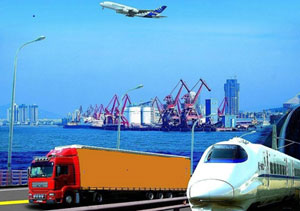
Emerging Markets seen hot spot for logistics
Baar (Switzerland), January 15, 2013
Global economic doldrums slowed emerging markets in 2012, but those countries remain bright spots for investors, manufacturers and logistics executives still wary of the uncertain outlook for the United States and Europe.
Emerging markets felt the effects of the continuing global slowdown in 2012 but generally weathered it better than developed countries that are their main markets, according to the Agility Emerging Markets Logistics Index.
The index, now in its fourth year, looks at the world’s most dynamic economies and the forces powering them. It ranks 45 major emerging markets and identifies the attributes that make them attractive for investment by logistics companies, air cargo carriers, shipping lines, freight forwarders and distribution property companies.
Together, the index rankings, analysis and survey of 375 industry professionals provide a basis to compare individual countries, weigh their strengths and weaknesses, and gauge their near-term prospects.
All the 45 emerging markets featured in the 2013 Agility Emerging Markets Logistics Index grew at an average of 4.4 per cent. In contrast, the US economy grew at 2.2 per cent while the EU contracted 0.2 per cent.
Heading into 2013, enthusiasm for emerging markets is strong among trade and logistics professionals, even as they indicate they are rethinking the importance of low-cost labor, facing tougher choices over how and where to source, and beginning to look beyond the so-called BRIC countries of China, Brazil, India and Russia.
Seventy-three per cent of those surveyed feel prospects for emerging markets in 2013 are “good” or “very good.” The figure is about the same percentage as a year ago – but the number who feel ‘very good’ is up sharply, to 22 per cent from 14 per cent.
The global outlook is cloudier: 46 per cent expect modest global growth while 47 per cent say global GDP will be flat.
“Business confidence is at a premium in an uncertain global economy,” said Essa Al-Saleh, the president and CEO of Agility Global Integrated Logistics.
“This year’s Index – in terms of the hard data and industry sentiment – is encouraging when it comes to the promise of emerging markets. It shows that they remain resilient and will continue to offer some of the best opportunities for near-term and long-term business growth.”
“This year’s Index shows once again the importance of emerging markets to the development of the global logistics industry,” said John Manners-Bell, Ti’s chief executive.
“Despite weakened demand for exports in Europe and the US, confidence in the developing world is high, and investment continues apace. Not all markets display the same level of potential, though, and the Index clearly shows which countries are ‘open for business,’ and which must do much more if they are to realize the benefits that integration in the global trading community can bring,” he noted
The 2013 Index paints a picture of contrasts. The markets of the Middle East and Africa were among the best and worst performers in the rankings.
The region is home to a group of stable, thriving, business-friendly markets that are attractive alternatives to the large BRIC economies. But it is also home to Arab Spring countries wracked by political upheaval and to Sub-Saharan countries that are struggling to improve their competitiveness.
GCC countries led by Saudi Arabia performed well ranking 4th in the index, followed by UAE (at 6th place), Qatar (12), Oman (13) and Kuwait (16) performed well in the overall rankings. Even so, the rankings tend to mask their underlying strengths by favouring larger markets such as the BRIC economies of Brazil, Russia, India and China.
In two of the three areas used to compile the Index, the Gulf countries led all others. The UAE, Saudi Arabia, Qatar, Oman, Kuwait and Jordan had the highest “market compatibility” scores, meaning they had comparatively well developed service sectors and population centers, good distribution of wealth, high foreign investment, low barriers to market entry and good security.
The UAE (1), Oman (3) and Saudi Arabia (5) were also leaders in “market connectedness,” a measure of the frequency and reliability of sea and air links, the strength of their transport infrastructure, and efficiency of customs/border systems, it added.
Egypt, Bahrain and Tunisia were the biggest losers in the overall Index rankings. Egypt plummeted nine places and experienced declines in all three categories that make up the Index.
Bahrain fell five places despite its strong infrastructure and transport network. Tunisia dropped three places. Only 13 per cent of the trade and logistics professionals surveyed believe the Arab Spring countries are “ready to grow and absorb investment.”
“Egypt holds so much potential because of its size and location,” Al-Saleh said. “If it can restore political stability and send the right signals to the domestic and international business communities, it can rebound quickly.”
Iran, Syria and Iraq – none of which is among the 45 countries in the Index – were named by survey respondents as having the least potential as emerging logistics markets. Ethiopia and Libya were next, said the expert.
The trade and logistics professionals surveyed ranked trade between Asia-Africa as having the greatest potential for growth after Intra-Asia trade. Sub-Saharan Africa continues to draw attention, despite an uneven performance.-TradeArabia News Service







